- Home
- Edmund White
City Boy Page 18
City Boy Read online
Page 18
I learned all sorts of things from David. How to entertain simply with just a few dishes and everything prepared in advance. How to befriend people who are older, richer, and more famous by being useful to them—helping them send packages, find a caterer, work out a seating plan, bringing back from Europe those heavenly sleeping suppositories (Suponoryl) that weren’t available here—an office that I’d repeatedly perform for Jimmy Merrill. How to keep a short book review simple and unassuming by cutting all of those pointless, show-offy references to Gramsci and Rousseau. In fact, David had a horror of general ideas and liked to quote William Carlos Williams’s remark “No ideas but in things.” David was erudite but never made a show of it, as if he assumed that people could sense a reference even if he didn’t make it explicitly. For that reason, perhaps, his essays and reviews were less noticed than they might otherwise have been. He was too subtle, too graceful. He didn’t make pronouncements the way Harold Bloom did, nor did he lay bare all the formal trappings of a poem as Helen Vendler did. He knew Bloom and Vendler and envied them both, though Bloom cheered him once by saying, “Of course I’m not a real critic the way you are, David; I’m unable to do a close reading of a poem with your style.” David was so subtle that his friends laughingly compared him to Proust’s aunts, those ladies in Swann’s Way who think they’re thanking Swann for the wine by making an extremely indirect reference to it.
I learned to admire but not to imitate David’s way of writing biography (in Becoming a Poet he examined Elizabeth Bishop and her “opposite,” Robert Lowell, and her “covering cherub,” Marianne Moore). David had found a compelling middle path between gossipy narrative and academic close reading. He had a gentle, almost indirect way of starting with a few facts in his subject’s life (Bishop’s witnessing as a child her mother’s mental breakdown) or a scrap of correspondence, then relating it to her poems and stories—not as a “theme” (thematic criticism was the more primitive pursuit Howard Moss performed in his Magic Lantern of Marcel Proust) but as a “strategy” or a trauma to resist or transpose. I think he understood that real writers don’t just idly render one subject or another but conceal or dramatize or convert into other terms the hidden dynamics of their own lives. In her greatest poems, such as “The Bight,” “The Moose,” “At the Fishhouses” or “In the Waiting Room,” Bishop rehearsed and disguised her childhood fears. David wasn’t psychoanalyzing her; he was never reductive, he never mentioned sex, he never talked about repression or “screen memories” or displacement, but he did see a writing career as a series of skirmishes with one’s own younger self and also with one’s contemporaries. In her case, Bishop had Lowell’s example as a public, political poet to resist and reject. Although she’d once contemplated marrying him, she defined herself as indeed his opposite, just as she saw Marianne Moore as her mentor and would write to please her (and finally to surpass her). The day she ignored one of Moore’s strictures was the day she declared her independence.
Writing was torture for David. Maybe he’d been handicapped by being made a full professor and tenured at a young age. His boss at Rutgers, Richard Poirier, was a devoted friend from Harvard days and looked after him. I once attended one of David’s classes, a session on The Tempest, and I was impressed with his way of provoking discussion while always keeping it on target and eventually leading it back to conclusions that only David’s subtle mind could have worked out. He’d written a book on Sir Philip Sidney and one on contemporary poets (Robert Lowell, John Ashbery, Elizabeth Bishop, Adrienne Rich, and James Merrill) called Five Temperaments (an allusion to Balanchine’s and Hindemith’s Four Temperaments). He’d fiddle with the phrasing of a paragraph for days on end—and accordingly, his final drafts were always both efficient and felicitous. Nevertheless, given the choice, David would always have preferred going out with friends to writing, especially if he had a chance to go out with my agent, his close friend Maxine Groffsky, to the ballet.
Maxine was a striking redhead who’d served as the model for Brenda Potemkin in Philip Roth’s Goodbye, Columbus, the title novella included in Roth’s first published book. She’d been extremely close to several of the leading painters of the day (including Jasper Johns and Robert Rauschenberg) and had the canvases on the wall to prove it. For years, as the Paris editor of the Paris Review, she’d lived in France with Harry Mathews and raised the children he had had with the artist Niki de Saint Phalle. She took dance lessons and carried her tall, slim body with the élan of a ballerina. Maxine was fun and flirtatious and could talk as dirty as Marilyn Monroe but ultimately was mysterious. No one knew much about her private life, and she’d never granted interviews or used her connections to serve anyone, least of all herself.
She and David loved the New York City Ballet, attending several times a week together. In those years, throughout the 1970s, the lobby of the New York State Theater, home to the company, was the drawing room of America. Whereas intellectuals and artists seldom attended symphonic or orchestral events, back then the ballet attracted the best minds in the city. Maxine eventually married the president of the ballet board, Winthrop Knowlton, but for a decade David was her constant companion there. Like rock fans they spoke of the dancers (whom they didn’t know) in terms of familiarity: “Karen’s put on a few pounds, I’d say,” or, “God, Patricia seems more and more neurotic—I think she may be on her way to having a total breakdown one of these days.” “Suzanne was sublime tonight in Jerry’s boring old Ravel piano concerto.”
I, too, had been attending the ballet weekly since the midsixties, when it was still in the old Fifty-fifth Street theater with its terrible sight lines. In those days a ticket in the top balcony cost just ninety-nine cents, and Stan and I would count out our pennies on the kitchen table and rush uptown just before curtain time. Cheap seats were still to be had now, but even the least expensive had to be budgeted for in advance. Unlike David and Maxine I never took much interest in particular dancers. I disliked stage gossip and didn’t want to compare one dancer to another—all too close to acrobatics for my taste. But of course one can swoon with admiration before the choreography of Concerto Barocco just so many times. Finally, to stay interested, one has to notice that close call Peter had when he nearly fell coming out of that second spin in Jewels.
New York was still obsessed with the hierarchy of the arts and the idea of the Pure. Many of the figures of the international scene, active elsewhere in the world, remained present in the imaginations of cultured New Yorkers—Nabokov, Beckett, Sartre, to name a few. In the 1960s a New York newspaper had asked American writers to identify the most important living writer—they chose Beckett.
The music of Stravinsky, though he’d recently died, was being played every week during the New York City Ballet season. The three great geniuses of the twentieth century, Stravinsky, Nabokov, and Balanchine, had all started off in imperial Russia, passed through France, and known a second (or third) creative flowering in America. Whereas later New Yorkers, and Americans in general, would turn their backs on Europe, in the 1970s we were all still reading Lacan, Deleuze, Foucault, Barthes, Derrida, and Lévi-Strauss. And many distinguished foreigners would live in rough, grimy, stimulating New York for long periods. Many French and Italian artists had studios in Manhattan; the French sculptor Alain Kirili and his photographer wife Ariane Lopez-Huici began to spend longer and longer sojourns in New York in the seventies, Kirili becoming a major collaborator with American jazz musicians.
The American literary avant-garde was very much in business, including such New Yorkers as Donald Barthelme. They were often published in the New American Review, and all made frequent appearances at the 92nd Street Y in New York, events that were well attended. A magazine such as Esquire in 1963 was able to generate sales by mapping out the “red-hot center” of American literary life—and locating it in New York and among mostly white men. Norman Mailer, Gore Vidal, and Truman Capote, like Hollywood stars, all appeared on national TV, and Mailer’s movements or Philip Roth’s were c
arefully charted by their fellow New Yorkers. David’s boss Richard Poirier had written a book in the Modern Masters series about Mailer and Vidal and their contrasting chat styles on television (Vidal’s was better suited to the medium, Poirier argued, since it consisted of sound bites rather than complex, sustained arguments). This was the backdrop of Woody Allen films featuring Jewish psychiatrists, of blue blazers worn over faded jeans, of Saul Steinberg cartoons. I remember seeing Steinberg at a party in the Hamptons in the late sixties, when he would glide up from behind a tree and try to spook my date, a girl from work. We thought it was glamorous to be a writer; a highly visible whiskey ad of the time showed a writer pounding his chic little Olivetti and asking his girlfriend, “While you’re up, would you get me a Grant’s?” We didn’t pay much attention to television personalities (there were only three channels in those days); our celebrities were all writers and painters.
Of the various institutions that aided these encounters, this sense of community, almost all of them have subsequently disappeared. Susan Sontag once remarked that maybe “we” wouldn’t have staged such vigorous assaults on cultural institutions if we’d known how fragile they were, how easily they could be swept aside. The New York City Ballet, as David Kalstone observed, appealed to intellectuals because only such a noble and nonverbal vision of a communal utopia as proposed by Balanchine’s choreography (or by Jerome Robbins in pieces such as Dances at a Gathering) could have attracted and united so many contentious, wordy New Yorkers. The three intermissions each evening meant plenty of time for spontaneous conversations (and drinks) in the lobby. Many New York thinkers and artists—Edward Gorey, Bob Gottlieb, Susan Sontag, Richard Poirier, and the best dance critic, Edwin Denby (by then a nearly catatonic ghost)—attended every night. You could always spot the tall Gorey with his white beard, black jeans, and white sneakers. Denby always arrived in a surrounding cloud of handsome young men; they were full of opinions though he said nothing. These fans recognized the rare privilege of being able to watch Balanchine unveil one masterpiece premiere after another. His famous 1972 eight-day festival devoted to Stravinsky, who’d died the year before, included twenty-two new Balanchine ballets; the two-week Ravel Festival in 1975 featured sixteen premieres by Balanchine and other choreographers.
Fans felt so possessive of Balanchine that no one wanted to admit that he or she shared this passion with others. Fellow fans were seen almost as romantic rivals, but like rivals were drawn to one another in the end since no ordinary person understood their obsession. They wanted to talk about their great love, and who better as an interlocutor than another bewitched swain or maiden? Balanchine proved to New Yorkers that world-class genius had found refuge and expression in their city. His use of Mozart and Bach as well as of the twentieth-century scores of Ives, Stravinsky, and Hindemith pointed toward a way of combining innovation within tradition, just as his classical ballet vocabulary was thrown into relief by eliminating the cumbersome apparatus of nineteenth-century storytelling and replacing tutus with black-and-white practice tights and tops. Balanchine had said that there are no mothers-in-law in ballet, but in almost all his dances even mothers had been eliminated. What was left was a narrative impulse stripped of story, a sense of drama without exposition or denouement, everything in constant crisis. The New York City Ballet was presenting new work every season. It was not a museum, as was the Metropolitan Opera, for instance, or the Philharmonic, the ballet’s two neighbors at Lincoln Center.
To watch a genius at work is the highest civilized pleasure, and Balanchine was our resident genius, at the peak of his powers. We saw not only his newest ballets but also the two great works preserved from the 1920s and the Diaghilev years of his past, Prokofiev’s The Prodigal Son (with sets and costumes by Rouault) and Stravinsky’s Apollo, not to mention Tchaikovsky’s Serenade from the 1930s, Balanchine’s first ballet composed for an American company. For us something about that ballet was touching as a fossil record of the first rocky rehearsals at Balanchine’s brand-new school up in White Plains. As he explained it, “It seemed to me that the best way to make students aware of stage technique was to give them something new to dance, something they had never seen before. I chose Tchaikovsky’s Serenade to work with. The class contained the first night seventeen girls and no boys. The problem was, how to arrange this odd number of girls so that they would look interesting. I placed them on diagonal lines and decided that the hands should move first to give the girls practice.
“That was how Serenade began. The next class contained only nine girls; the third six. I choreographed to the music with the pupils I happened to have at a particular time. Boys began to attend the class and they were worked into the pattern. One day, when all the girls rushed off the floor area we were using as a stage, one of the girls fell and began to cry. I told the pianist to keep on playing and kept this bit in the dance. Another day, one of the girls was late for class, so I left that in too.”
Because Balanchine had studied music as well as ballet, he had an uncanny way of “seeing” the deep structure of the music he was setting and of rendering it visible. Whereas lesser choreographers might respond to the ornamentation of the score and set a trill, say, or a clash of cymbals, Balanchine ignored the surface irritation of the music and went right to its unfolding principles of development and contrast. That was the source of the exhilarating beauty of those evenings. On the one side there were the young, superb bodies of men and women entering and running and leaping through strong allées of lighting projected from the wings, all the rush and sparkle of the corps and the dignified, gravity-defying combinations of the soloists, those cantilevered arabesques on point and thrilling female flights into space facilitated by noble, self-effacing male partners. If that component was pulse-quickening, a perilous spectacle, on the other side was the abstract diagramming of great scores, an exploration of music itself, the spiritual alternative to language.
Balanchine knew how to program one “white” ballet and one sublimely simple pas de deux, then a “difficult” modern work and a bang-up Stars and Stripes high-kicking finale. I suppose he was teaching us (without meaning to) the concessions that even the most serious artist (visual or literary) had to make to “show business” and crowd-pleasing if he or she was going to survive and keep an audience’s attention. In a quite different way I suppose he was showing us how the supreme manifestations of the mind require sweat and muscles, how the spatial and temporal meditations of an old man can be realized only by willing young bodies with flushed cheeks and taut rumps and long necks and a good turnout. There was nothing charitable about his collaboration with the young; it was a partnership essential to him and to them, especially since he often created a new ballet “on” particular dancers, tailor-made to their limitations and gifts.
And even the most high-minded balletomane such as me had to acknowledge one drama being played out before our very eyes: Balanchine’s unrequited love for Suzanne Farrell. She was quite literally his Dulcinea, for he had returned to the stage to mime the role of the besotted, aging Don Quixote in a full-evening ballet that had much more story than anything else we’d seen from Balanchine—his own story, of course. Suzanne, who was too good a Catholic girl to sleep with Balanchine, left the company in 1969 with her dancer husband and went off to Europe to join the company of the vulgar, talentless Maurice Béjart with his vast outdoor spectacles complete with dry-ice fog and wind machines worthy of the Third Reich. Béjart’s company was no place for the greatest ballerina of the day—or even for a woman. In his works the hunky men were stripped down to their loincloths and the women bundled away in burkas; everything was as tackily homoerotic as a bad Cocteau porn drawing.
Only six years later did Suzanne Farrell come back to the New York City Ballet. Her return, full of wisdom and tenderness but still sexless, crowned Balanchine’s last days with an unexpected but entirely deserved happiness. This love story, unrequited and, paradoxically, fertile, was a breathtaking drama unfolding for us, his greedy
audience.
David had a new lady to squire about and to invite to the ballet—Lillian Hellman. She was then at the height of her fame, since decades after her most successful plays she had begun to write short, punchy memoirs in which she played le beau rôle of quiet heroism. After her death we would all discover that Mary McCarthy had been right—Lillian was a liar. She hadn’t taken money into Central Europe to save Jews in the late 1930s. The person who’d done that was a psychiatrist in Princeton. The two women hadn’t known each other but they did have the same lawyer—who must have told Hellman the story of these brave exploits. Hellman had simply appropriated them. That story, joined to her well-known and well-publicized defiance of the House Un-American Activities Committee—”I will not cut my conscience to fit this year’s fashions”—had elevated her to the dubious distinction of becoming the Pasionaria of the American Left, though in fact she was an old-fashioned Stalinist without scruples. Obeying Stalin’s party line, she had opposed the U.S. government’s granting of asylum to Trotsky. She admitted to being a Stalinist to her biographer Joan Mellen.

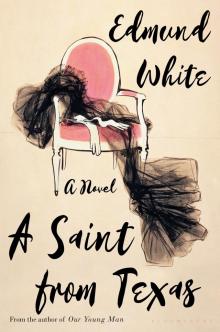 A Saint from Texas
A Saint from Texas The Farewell Symphony
The Farewell Symphony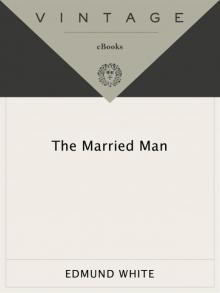 The Married Man
The Married Man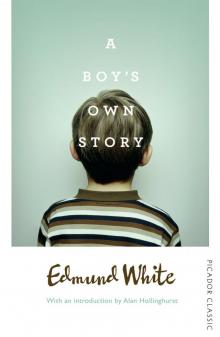 A Boy's Own Story
A Boy's Own Story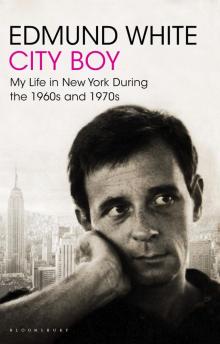 City Boy
City Boy Inside a Pearl
Inside a Pearl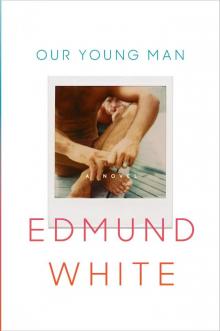 Our Young Man
Our Young Man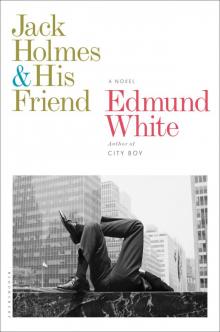 Jack Holmes and His Friend
Jack Holmes and His Friend